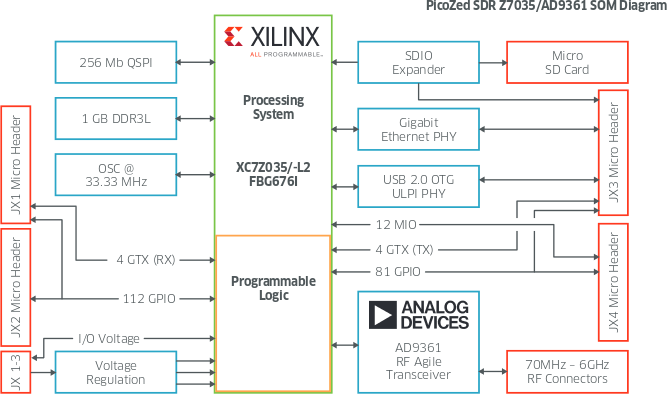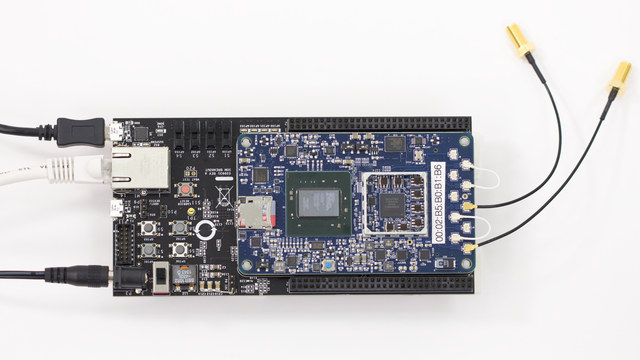PicoZed SoM based on Xilinx Zynq-7000 series SoCs was introduced in 2014 by Avnet. The company has now introduced a new version specifically designed for software designed radios which combines Zynq-7035 SoC with Analog Devices AD9361 RF transceiver supporting 70 MHz to 6.0 GHz frequency bands. Target applications include portable agile wireless communications, P25 public safety Radio, point-to-point communication, femtocell & picocell base stations and portable instrumentation.

PicoZed SDR SoM specifications:
- SoC – Xilinx Zynq XC7Z035-2L FBG676I AP SoC with a dual core Cortex A9 processor @ 800 MHz and Kintex-7 FPGA with 275K logic cells
- System Memory – 1GB DDR3L SDRAM
- Storage – 256Mb QSPI Flash, microSD Card Interface
- Network Connectivity – 10/100/1000 Ethernet PHY
- USB – USB 2.0 OTG ULPI PHY
- I/Os – 205+ User I/O + 4 GTX channels
- Radio Transceiver – Analog Devices AD9361-BBCZ integrated RF Agile Transceiver with:
- 2 × 2 RF transceiver with integrated 12-bit DACs and ADCs
- 70 MHz to 6.0 GHz Band
- TDD and FDD operation
- Tunable channel bandwidth – <200 kHz to 56 MHz
- Supports MIMO radio: < 1 sample
- sync on both ADC and DAC
- Miniature RF connectors – 4 TX, 4 RX, 2 TX monitor
- Voltage regulation and sequencing with power-good failsafe circuits
- Power and signal interface through 4 micro header connectors
- Clock and frequency synthesis circuits
- Dimensions – N/A
PicoZed SDR module sells for $1,095, while PicoZed SDR AD9361 Development Kit goes for $1,799 with a 10 weeks factory lead time. If you are interested in software defined radio, but find the price is a bit steep, there are some cheaper boards like HackRF or bladeRF support about the same frequency bands, with less I/Os and processing power, but now costs around $300 to $400. If you just want to play around with SDR, you could also start with a cheap USB SDR Kit (~$30), which is obviously much more limited are requires a PC or board.
More details about PicoZed SDR SoM can be found on the product page.

Jean-Luc started CNX Software in 2010 as a part-time endeavor, before quitting his job as a software engineering manager, and starting to write daily news, and reviews full time later in 2011.
Support CNX Software! Donate via cryptocurrencies, become a Patron on Patreon, or purchase goods on Amazon or Aliexpress






